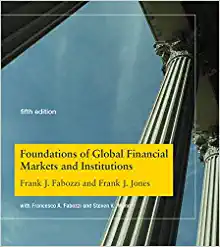Question
CO2 (carbon dioxide) and other greenhouse gas (GHG) emissions are a key cause of climate change. Australian business leaders and politicians, however, seem to be
CO2 (carbon dioxide) and other greenhouse gas (GHG) emissions are a key cause of climate change. Australian business leaders and politicians, however, seem to be unable to agree on the best way (i.e. best policies) to reduce our emissions.
Imagine you are an economic consultant and you have been engaged by the Federal Minister for
Energy and Emissions Reduction (The Hon Angus Taylor MP) to answer the questions posed below. Assume he is new to the role and assume he does not have a background in economics. These assumptions mean that, as part of your response, you may need to carefully explain to him the economic theory underpinning some of the answers. This may include the use of diagrams and it may also require the inclusion of definitions as appropriate.
In addition to your textbook it is recommended that you also read:
- Green, F. and Denniss R. (2018) 'Cutting with both arms of the scissors: the economic and political case for restrictive supply-side climate policies', Climate Change, 150: 73-87.
Questions
1. It has been suggested that Australia has one of the highest per capita GHG
emissions in the world. Is this true? Fact-check this statement and provide a graph or table to show how Australia compares globally. Make sure you clearly state where you
have sourced your data from.
2. What sector produces most of Australia's GHG emissions? (Again, make sure you clearly state the source of your data).
3. Why do firms pollute?
4. What is the Kyoto Protocol and what is the Paris Agreement and what is the
difference between both? What is Australia's commitment under the Kyoto Protocol and under the Paris Agreement?
5. The climate policy toolkit has, to-date, mostly focused on demand side policies (i.e.
policies that affect the pollution demand curve), some of which are 'command-and-
control' and others are market based (e.g. cap-and-trade schemes, carbon taxes).
- Explain what is meant by command-and-control in terms of a demand side climate change policy. What are the pros and cons of this as a policy option?
- Using a diagram, explain how a carbon tax could help reduce pollution.
- Using a diagram or diagrams, explain how a cap-and-trade scheme could result in pollution reduction.
- What is the Emissions Reduction Fund and what are its pros and cons?
- Of the four policy options above ((a) to (d)) which one do you favour as a demand side policy and why?
Step by Step Solution
There are 3 Steps involved in it
Step: 1

Get Instant Access to Expert-Tailored Solutions
See step-by-step solutions with expert insights and AI powered tools for academic success
Step: 2

Step: 3

Ace Your Homework with AI
Get the answers you need in no time with our AI-driven, step-by-step assistance
Get Started


